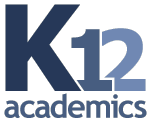Students who have not received general upper secondary education have the academic portion of their program financed by the state. As for the vocational track, some students pay fees and others are financed through the state order program, where state authorities request a certain number of trained workers and specialists in certain fields. These students are chosen through a merit-based competition based on grades and recommendations from teachers or public officials.
Education for the nation as a whole made up
14.4% of public expenditures in 1999
12.1% in 2000
11.9% in 2001
12.6% in 2002
of which the lion's share went to general education:
Share (%) of public expenditure on education by level and type, 1999-2003
| Pre-school education | 3.1 | 3.7 | 3.2 | 3.3 | 3.0 | 3.3 |
| General education | 68.4 | 73.7 | 65.2 | 68.7 | 66.2 | 68.4 |
| Primary vocational education | 3.2 | 3.3 | 2.9 | 3.3 | 3.6 | 3.2 |
| Secondary vocational education | 3.5 | 3.3 | 2.5 | 2.5 | 2.3 | 2.8 |
| Other educational programmes | 11.9 | 6.1 | 17.1 | 12.3 | 16.4 | 12.8 |
| Higher education | 9.9 | 10.0 | 9.1 | 9.9 | 8.5 | 9.5 |
Comparative average monthly salaries (KZT), 1999-2003
| National | 11,864 | 14,374 | 17,303 | 20,323 | 21,991 |
| Industry | 16,370 | 20,647 | 23,812 | 26,280 | 27,952 |
| Public administration | 11,308 | 11,758 | 14,970 | 16,930 | 17,374 |
| Health care and social work | 6,821 | 7,267 | 8,288 | 10,863 | 12,089 |
| Education | 8,149 | 8,512 | 9,937 | 12,863 | 14,510 |

